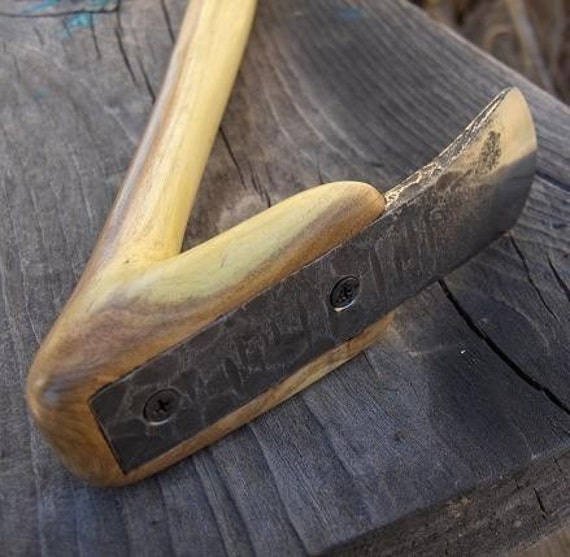
It has a curved head, which is ideal for chopping large trees and dense wood types. This axe is a common shape for felling axes, having originally risen to popularity in the 1860s. This axe has a straight edge across the top of the blade and a slightly bearded bottom edge. It is a popular pattern that is ideal for general outdoor ax jobs. It has a curved blade with a gentle flare. Please post any comments about squaring up the log with a froa on the blog.This pattern is named after Dayton, Ohio. Using Adze starts at 06:40 on the vide here When the timber has seasoned it'll be much easier to get a good finish using the adze. A draw knife could be a better option working the wet timber. And adjusting the direction of working to suit the grain. However I did manage to clean up the surfaces to a reasonable degree using more delicate strokes with the blade at an angle to the grain and often working from the centre outwards. I soon came to the conclusion that it wasn't worth the effort trying for an absolutely perfect surface. Also I'm working on on sections of the timber where the grain dips and rises so sometimes it cuts and sometimes it rips, similar to using a plane the wrong way for the grain. The fibres of green timber part more easily. Working the softwood in it's green state makes it virtually impossible to finish all areas without some tearing. The rest done by eye, after all that is how it will be judged.

With this mind the string line was only used as a rough guide. For this particular job only one side needed to be flat to any degree of accuracy, this is the side the floorboard will be on.įor all the other sides any degree of accuracy is purely for aesthetic reasons. Gradually working down to accuracy level you need. Working with a taught string line it's easy to identify the high spots and swipe them off. With a bit a practice, flattening the critical side of the beam to a tolerance around 1/8th of an inch per foot wasn't a problem. Going along the grain, with the blade attacking almost parallel to the surface angle it's possible to take off long shavings.ĭelicate "nibbles" can be taken, working around a knot form all sides to get a reasonable finish without ripping at one side.Īnd I'm sure there's many more in between. The timber can then be worked from the other direction to clean off whatever is left.

If the blade doesn't follow through to remove timber, pushing the handle lifts the split. Working along the grain a deep cut will rip / split out. Working diagonally to the grain its possible to get a scalloped out shaving in a single stroke.

The primary cut is a scallop due to the curved blade. It'll be different again to use on hardwoods and seasoned timber, on this job its very green softwood. I found the adze can be used in many different ways all depending on the ark and power of swing, the angle of contact and how the strike is followed through. The condition was OK but the blade needed some serious re grinding and it needed a handle, more information about the Adze grinding and Adze handle here, later. Sorby 2lb 12oz Adze head, made in Sheffield (just down the road from here). The adze was the only tool I didn't have so I plunged in to ebay to find one. Its quite a skill to master but repetition and practice soon develops the motor memory required. I've never used an adze before but always fancied having a go.


 0 kommentar(er)
0 kommentar(er)
